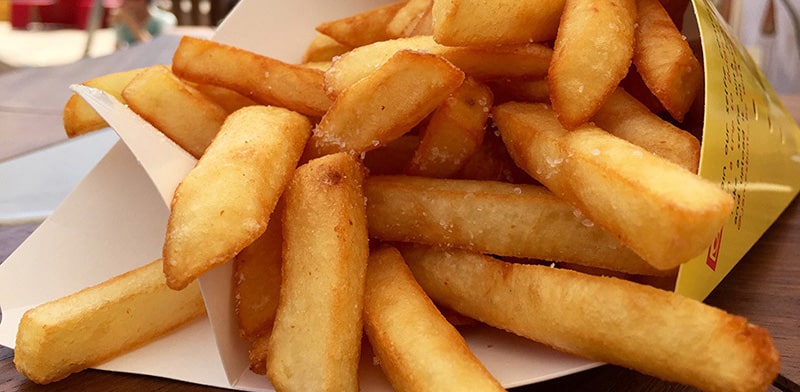
The dispute between the Belgians and the French over which of the two countries was the first to invent them has lasted for centuries.
The Belgians appeal to a manuscript dating back to 1781, which reported a very singular anecdote: the Walloons, the native population of the time, loved to fry small fish caught in the Meuse; during the winter, however, the river froze making fishing impossible. This was why they decided, initially only for the cold season, to replace them with potatoes, which were fried in the same way and cut into a stick, as a reference to minnows.
Belgian fries are made with a variety of special potatoes, which grows in Belgium and northern France, called “Bintje”.
In Belgium the climate is perfect for the cultivation of potatoes, thanks to the great wealth of nutrients in the soil and the humid climate: natural rains replace artificial irrigation.
Frites – as they are called in Belgium – are harvested, washed and peeled, before being cut: they are not the classic match fries, they are cut into three different sizes but always wide enough, so as to be crispy outside and leave a part of soft pulp inside.
The frying method is also important to make frites so unique and good: double frying must be done with vegetable oil or with bovine fat “Blanc de bœuf” – which gives Belgian chips that very recognizable smell – and the temperature of the oil must not exceed 175 degrees centigrade.
Belgium is the world’s leading exporter of frozen fried potatoes, and the Belgians would like to point out that french fries were not born in France, but in Belgium: they are called French Fries only for marketing reasons.
